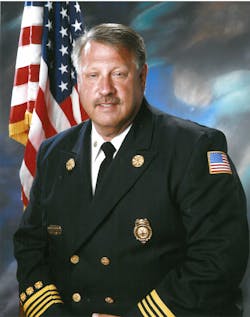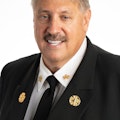There I was. Doing my traditional early morning ritual—checking my email. I was looking at the latest headlines on several news sites and jumping between CNN, CNBC, Fox and Fox Business whenever a commercial came on. As I was jumping among channels and locked onto CNN, there it was—another video of police officers attempting to restrain someone who appeared to be resisting.
Of course, all the talking heads were offering their opinions on whether it was the proper use of force and restraint. And then it dawned on me: How long is it before a video on one of the alphabet news channels shows firefighters and paramedics attempting to restrain a combative patient? After all, as I wrote in my April column, cameras are everywhere, and it is estimated the average American citizen is caught on camera 75 times a day. I don’t know how many public scenes I have been on where I look up and see someone with a camera phone shooting video of the scene.
Learn from the past
A video that was making the rounds a few years ago—and is still on YouTube—shows an Arizona fire department crew attempting to restrain a combative patient who overdosed on drugs. The patient was being removed from the home when things escalated. A neighbor recorded the video and, after being told to turn it off, said he has a right to film it. The firefighters had to restrain the patient after he attacked them—but that portion is not seen on the video. It never is. Either it was omitted to sway the viewer’s opinion or nobody thinks of pressing record until things escalate. What was not captured on video was that the patient punched a fire captain and a firefighter. The video simply showed the firefighters restraining the patient and cursing. The matter was investigated, and two firefighters were suspended for using excessive force.
Methods of restraint
Firefighters and paramedics not only have to restrain patients properly when they are combative, but they now need to be cognizant that if they are in a public place, there is a chance that someone may use their phone to record the entire event. Further, it may not be a bystander; it could be a police officer’s body camera that’s documenting the scene. And usually recordings from a police officer’s body camera are available to the general public through a Freedom of Information Act request.
Restraining combative patients is a necessary part of the job, not only to protect the patients from hurting themselves but also to protect emergency responders from being injured. Safety is one of the tenets of any scene, so restraining combative patients is important.
Many times when patients are combative, they are said to be in an agitated state known as agitated delirium or excited delirium. Usually, these states are associated with a metabolic cause, such as low blood sugar, chemical imbalance or the use of a stimulant, such as cocaine, methamphetamines or PCP. These patients usually have increased exertion and an increase in oxygen demand.
Gone are the days when you would restrain patients by sandwiching them between backboards, hobbling or hogtying them, placing them in body bags or securing them to Papoose Boards. Can you imagine the video of a patient sandwiched between two backboards, fighting to get out with firefighters standing over the patient? If possible, avoid using handcuffs, and use soft restraints instead. If the patient is spitting, place a surgical mask across their face.
Chemical restraint is another method of restraining a patient, but this is mainly used as an addition to physical restraint. Chemical restraint should not be considered in every case, only when physical restraint by itself increases risk to the patient and/or others.
Professionalism first
Remember that whenever you restrain any patient, whether there is a camera present or not, you should treat the person with respect and as a professional. They may be spitting and flailing their arms at you. They may get a good kick in and it may upset you, but do not let your irritation translate into frustration that is inappropriate and unnecessary.
About the Author
Gary Ludwig
GARY LUDWIG has served in three fire departments over his career: St. Louis, Memphis, and Champaign, IL. His fire, EMS and rescue career spanned a total of 46 years, and he has been a paramedic for over 44 years. Ludwig served as president of the International Association of Fire Chiefs in 2019-20. He has a Master’s degree in Business and Management, has written over 500 articles for professional fire and EMS publications and is the author of seven books.
Connect with Gary
Email: [email protected]
Facebook: Gary Ludwig
Twitter: @ChiefGaryLudwig
Website: garyludwig.com

